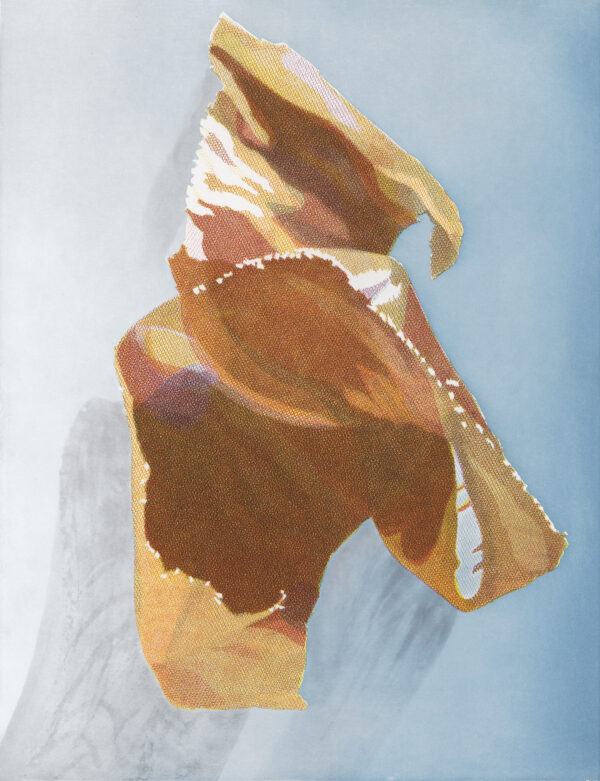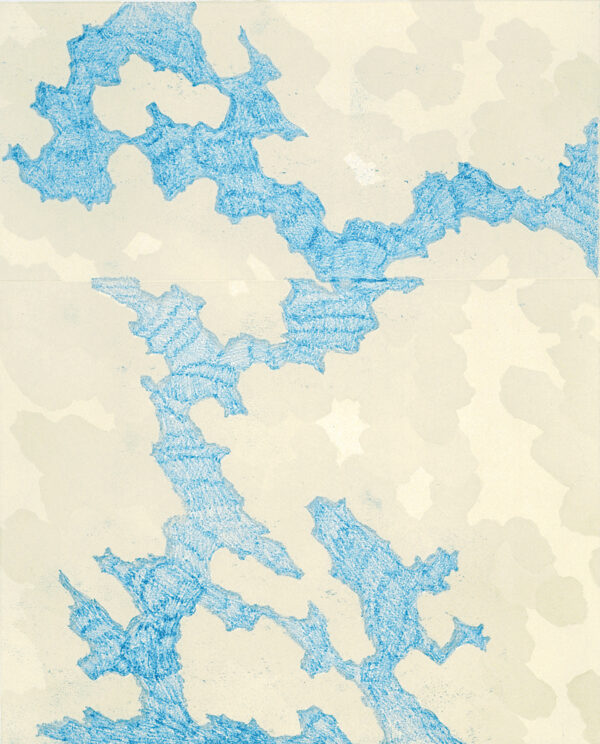Gay Outlaw (her given name) has followed an unusual path to becoming an artist. She was born in Mobile, Alabama in 1959, studied French at the University of Virginia, then traveled to Paris to learn the art of pastry at La Varenne cooking school. Then she went to New York to study at the International Center for Photography. She assisted the photographer William Eggleston for the Friends of Photography workshops, where she interned after relocating to the Bay Area in the early 1990s. Her interest in the objects she was photographing soon moved her into a sculpture practice. She still starts sculptures from photographs.
Outlaw has had solo exhibitions at the San Francisco Museum of Modern Art, the University of California at Long Beach, Mills College Art Museum, and the Jordan Schnitzer Museum of Art, University of Oregon/Eugene. She has also produced significant work in printmaking. Outlaw has worked in the Crown Point Press studio three times; her first visit was in 1995 when she made two photogravures; in 2001, she produced a group of prints inspired by “Brassey’s Book of Camouflage; and in 2019, she returned during which time she made four colorful prints.
Her early sculptural works were made of pastry, caramel, and other perishables. In 1995, she baked a 34-foot-long wall of fruitcake bricks and installed it at Yerba Buena Gardens in San Francisco. Passersby could smell Christmas and whiskey. Kenneth Baker wrote in the San Francisco Chronicle that what sets Outlaw’s work apart is a rigorous literalness. Caramel Springs, for example, was a curved brick of caramel with springs in tension cast inside. Baker wrote that it “demonstrates a slapstick physics: springs recoil, caramel does not.”
Outlaw’s work brings to mind William Carlos Williams’ famous poetic dictum, “No ideas but in things.” Each object, Williams says, should stand only for itself, not act as a symbol for some larger or more important thing. In Outlaw’s world, materials stand only for themselves. The food works demonstrate their material identity by melting or smelling, but Outlaw’s durable materials are equally up-front about their origins.
For Black Hose Mountain, now in the collection of the Berkeley Art Museum at the University of California, she filled lengths of dishwasher hose with white plaster and assembled the pieces into a dazzling eight-foot-tall mountain that looks at a distance like a computer model but could not be more handmade. The piece was inspired by the hunch and slump of Rodin’s “Balzac” and also by a desire to create a large-scale expression of glued and carved pencil forms she had been making: plaster-filled hose as a scaled-up version of a lead-filled pencil. Trains of thought hold her work together and make each move seem logical and necessary. Outlaw told the Napa Valley Register she likes to have “relationships [between pieces] you can’t quite put your finger on.”
Betty Klausner wrote in Art in America that while Outlaw’s work is labor intensive, it retains “a delicious edge of playfulness.” Outlaw makes her work like a good host who lets you know that she spent a lot of time crafting your dinner but isn’t a martyr about it. The viewer feels welcome to her feast.
Asked about the underlying meaning of her work, Outlaw said, “The message is no message. I call it formal free association.”
Gay Outlaw lives and works in San Francisco. She was commissioned by the San Francisco Arts Commission to create work for Terminal 1 of the San Francisco International Airport. In 2020 three sculptures were debuted in the terminal’s South Courtyard: Bird Plane House, Intersection, and Shell.
-Kim Bennett, Crown Point Press
BOOKS ABOUT THE ARTIST












